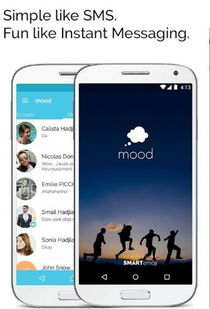Mood v Tone: A Comprehensive Guide
Understanding the nuances between mood and tone is crucial in various forms of communication, from literature to everyday conversations. Mood and tone both play a significant role in conveying the intended message, but they do so in different ways. In this article, we will delve into the intricacies of mood and tone, exploring their definitions, differences, and how they can be effectively used in different contexts.
What is Mood?

Mood refers to the overall atmosphere or feeling that a piece of work, such as a poem, story, or movie, evokes in the reader or viewer. It is the emotional backdrop that permeates the entire work, influencing the reader’s or viewer’s emotional response. Mood can be created through various elements, such as setting, characters, and the language used.
For example, a story set in a dark, stormy night with a mysterious character and a gloomy tone would likely have a melancholic or eerie mood. Conversely, a story set in a sunny, vibrant setting with cheerful characters and a light-hearted tone would have a joyful or optimistic mood.
What is Tone?

Tone, on the other hand, refers to the attitude or perspective of the author or speaker towards the subject matter. It is the voice of the writer or speaker, which can be formal, informal, serious, humorous, or any other emotional state. Tone is often conveyed through the choice of words, the way sentences are structured, and the overall style of the writing or speaking.
For instance, a news report about a natural disaster might have a serious tone, emphasizing the gravity of the situation. In contrast, a comedy show discussing the same event might have a humorous tone, using sarcasm and wit to make light of the situation.
Differences Between Mood and Tone

While mood and tone are closely related, they are distinct concepts. Here are some key differences between the two:
| Aspect | Mood | Tone |
|---|---|---|
| Definition | The overall atmosphere or feeling of a work | The attitude or perspective of the author or speaker |
| Creation | Created through setting, characters, and language | Created through word choice, sentence structure, and style |
| Example | A melancholic mood in a story set in a dark, stormy night | A serious tone in a news report about a natural disaster |
As you can see from the table, mood and tone are both essential in conveying the intended message, but they do so in different ways. Mood focuses on the emotional atmosphere, while tone focuses on the author’s or speaker’s attitude.
Using Mood and Tone in Different Contexts
Understanding the differences between mood and tone is crucial in various forms of communication. Here are some examples of how mood and tone can be effectively used in different contexts:
1. Literature
In literature, mood and tone are essential in creating a rich and immersive experience for the reader. A writer can use mood to set the stage for a story, while tone can be used to convey the author’s perspective or emotional state.
For example, in “To Kill a Mockingbird,” Harper Lee uses a somber mood to highlight the injustice and prejudice in the Southern United States during the 1930s. The tone of the novel is often serious and reflective, reflecting the author’s critical view of the society she depicts.
2. Advertising
In advertising, mood and tone are used to create an emotional connection with the target audience. A company can use a cheerful mood to promote a product that brings joy, while a serious tone can be used to emphasize the importance of a cause or product.
For instance, a commercial for a charity might use a somber mood and a serious tone to convey the gravity of the cause and the importance of supporting it. Conversely, a commercial for a new smartphone might use a vibrant mood and a playful tone to highlight the fun and excitement of using the device.
3. Public Speaking
In public speaking, mood and tone are crucial in engaging the audience and conveying the speaker’s message effectively. A speaker can use a confident tone to






